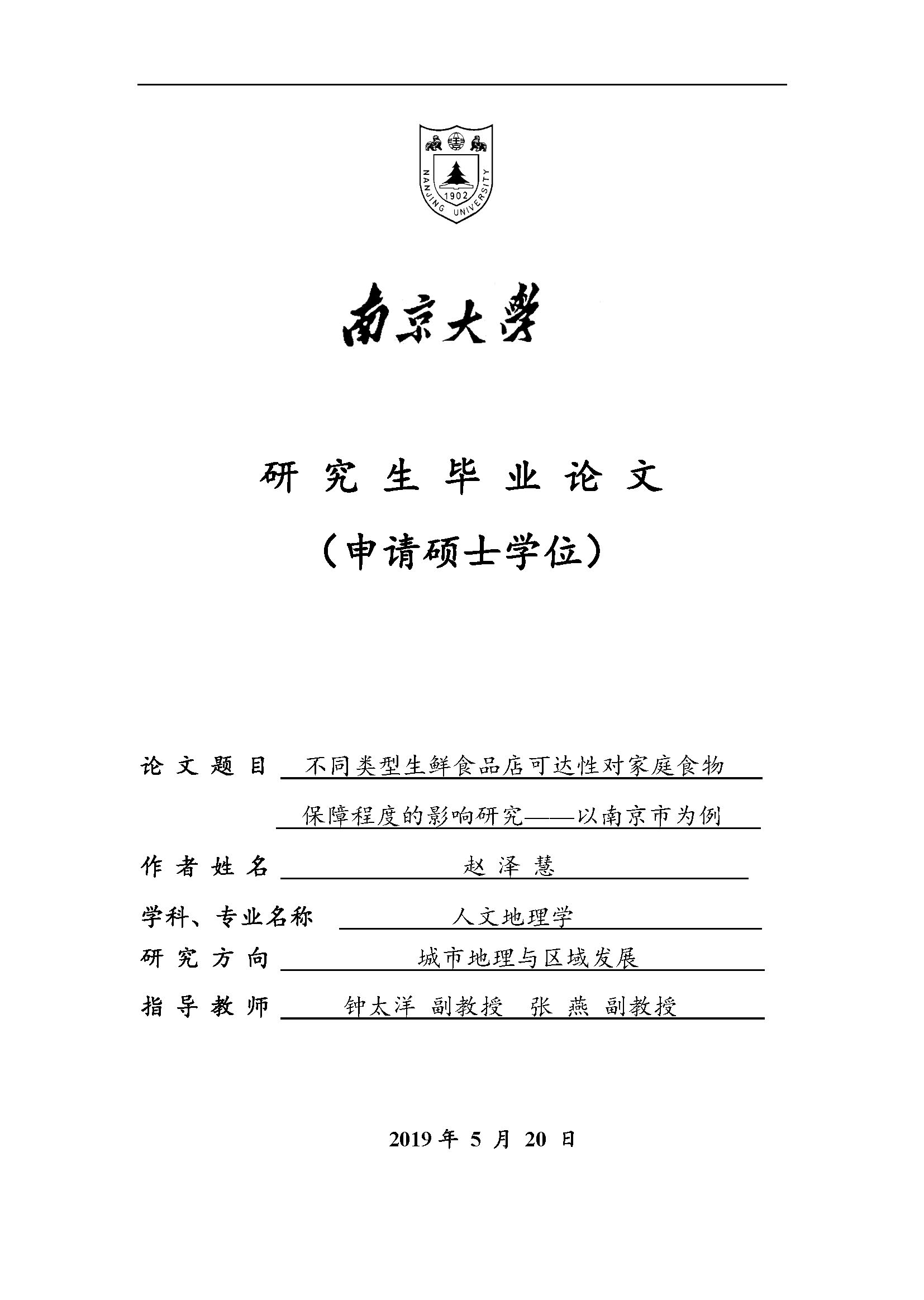— Masters Thesis —
With the improvement of income and living standard, people are not only satisfied with the food consumption, but also need to eat nutritionally and healthily. The food security level of a family is not only influenced by its own eating habits, but also by the surrounding food environment. The accessibility of food retail places is an important factor affecting residents’ food consumption and nutritional health status. In areas lacking fresh and healthy food supply places, obesity, diabetes, malnutrition and other diseases are also prone to erupt. At present, the relevant researches on food retail environment and food security level at the micro scale are mainly concentrated in developed countries such as Europe and America, while there are few researches in this field in China. Taking Nanjing as an example, this paper discusses the impact of the accessibility of different types of food supply sites on the level of family food security, provides a basis for the layout planning of commercial outlets in Nanjing and the accurate implementation of food security policies, and provides a reference for other cities in China to carry out similar studies.
This study first measured the accessibility of three major fresh food stores in Nanjing, namely wet market, supermarket and fresh food store, from the three aspects of per capita enjoyment, minimum time cost and cumulative opportunity number. Secondly, based on the detailed data obtained from the 2015 Nanjing household food security survey, an evaluation index system involving quantitative guarantee, nutrition guarantee and safety guarantee was constructed to comprehensively evaluate the level of Nanjing household food security and analyze its spatial distribution. Finally, through the establishment of a model with regulatory effect, the impact of different types of fresh food stores in Nanjing on the level of household food security was explored. The main conclusions are as follows:
(1) Nanjing fresh food store accessibility measure results show that: first, the accessibilities of different kinds of fresh food outlets differ significantly, the average number of stores per person from high to low is fresh shop > wet market> supermarket, the average minimum time costs from small to large, in turn, as the wet market> fresh store>supermarket, the opportunity to accumulate quantity order from large to small is fresh shop > wet market> supermarket; Secondly, the number of fresh food stores in gulou district is nearly 10 times higher than that in Gaochun district. Third, the time it takes for households in the central city districts to access the nearest fresh food shop is shorter than the outlying areas. Households in Jianye district only need six minutes walk to get to the nearest fresh food shop while Jiangning area needs nearly one hour.
(2) The evaluation results of household food security degree in Nanjing show that: first, the food security level and the dietary diversity level in Nanjing are relatively high, with the average scores of HFIAS and HDDS being 0.59 and 7.83 respectively, and MAHFP is 12. Second, the level of food availability is high, but nutrition security level and the food safety level need to be improved: the measurement of availability level is higher, the average score of 97.18, the nutrition security level is 66.11, and the food safety level is low with an average score of 43.06, the comprehensive food security level scores an average of 84.25; Third, the household food security levels differ across different areas in Nanjing, households with relatively low food availability level are clustered in the southwest of Lishui district; households with relatively low degree of nutrition security are clustered in the southwest of Pukou district; the levels of food safety and comprehensive food security of Gaochun district are significantly higher than other districts, the spatial distribution trend is that the city center is relatively higher that those in the peripheries.
(3) The accessibility of different types of fresh food stores impacts household food security level differently: first, the accessibility to small fresh food stores fosters food availability, safety and comprehensive security level; the accessibility to supermarkets fosters household nutrition security and food safety, and accessibility to wet markets is not the main factor influencing household food security level; Secondly, small food shops play an important role in regions that lack wet markets or supermarkets. In the case of the same accessibility level of wet markets and supermarkets, the better the accessibility of small food shops is, the higher the household food security level will be. Thirdly, in addition to the accessibility of food outlets, household characteristics including household structure, monthly family income, monthly food expenditure and lived poverty index will also affect the level of household food security to various degrees.

